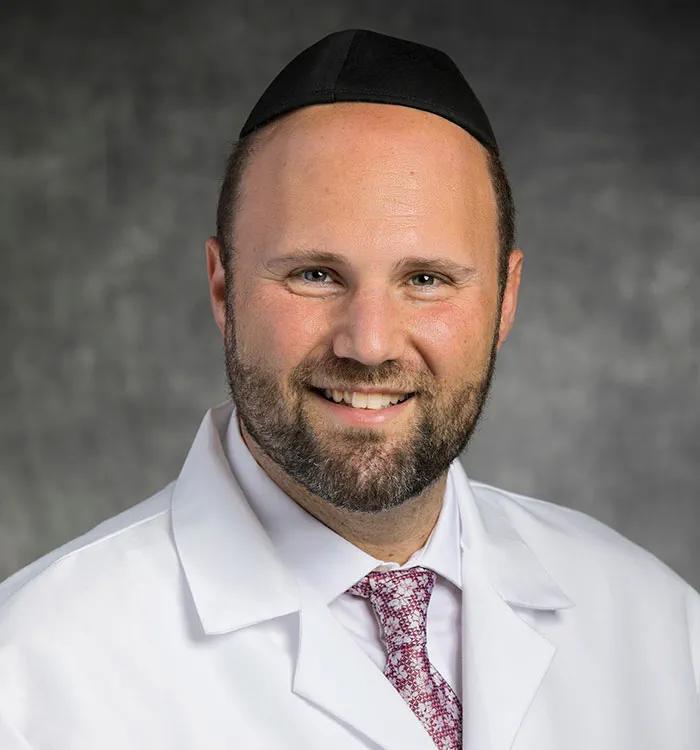- Center on Health Equity & Access
- Clinical
- Health Care Cost
- Health Care Delivery
- Insurance
- Policy
- Technology
- Value-Based Care
Overcoming Barriers to Guideline-Directed Cardiometabolic Care
According to Ian Neeland, MD, strategies like pharmacist-led counseling, patient education programs, and patient assistance initiatives are key to addressing therapeutic inertia.
Therapeutic inertia occurs when a patient’s treatment is not adjusted in a timely manner after not meeting their treatment goals. In diabetes and cardiometabolic care, addressing therapeutic inertia is essential to ensuring patients receive evidence-based treatments like sodium glucose co-transporter 2 (SGLT2) inhibitors and glucagon-like peptide-1 (GLP-1) receptor agonists.
Ian Neeland, MD | Image credit: University Hospitals

In this second part of an interview with The American Journal of Managed Care® (AJMC®), Ian Neeland, MD, director of cardiovascular prevention and codirector of CINEMA at the University Hospitals Harrington Heart & Vascular Institute, explains what strategies the CINEMA program has implemented to overcome therapeutic inertia and how the program can be scaled to other health care systems. He also serves as associate professor of medicine at Case Western Reserve University School of Medicine.
Neeland recently coauthored an article for a supplement to AJMC about the CINEMA program’s design and potential for broader application. Learn more about the management of cardiovascular-kidney-metabolic syndrome.
This transcript has been lightly edited for clarity.
AJMC: What strategies have proven most effective in overcoming therapeutic inertia, especially in ensuring patients receive guideline-directed therapies like sodium-glucose cotransporter 2 (SGLT2) inhibitors and glucagon-like peptide-1 receptor agonists?
Neeland: Some of the biggest barriers to access are social determinants of health, as well as medication access and resources of information. The strategies we’ve employed are, first of all, we have a clinical pharmacist champion who meets with every single patient who starts one of these medications and does medication education, counseling, and dose escalation. Every 4 weeks they have a touch point with the patient to ensure that they're on the correct therapy, that their side effects are being addressed, and that their concerns are being addressed, and that will help them adhere to therapy and maintain long-term therapy with long-term results.
We also have a very robust educational and outreach component to our program. We have classes on Mondays which range from multiple different things, from medications to foot care to nutrition and dietary aspects of care. And then on Tuesdays, we have a chair exercise program using resistance bands. Those multiple touch points and that interaction that you get directly through individuals through a Zoom with our staff every single week has proven extremely impactful and important to help people maintain and engage in their care and to stay in the program and stay with the recommendations that we've provided. So, those are 2 very important strategies have been proven extremely effective.
The third one is patient assistance programs. For those people who cannot afford some of these medications that are evidence-based and can be very beneficial for patients to reduce risk, we employ patient assistance programs to help them obtain medication and work with their insurance companies if it’s possible to do that. Those are some of the big strategies.
I also mentioned before that the community health worker is an important strategy in patients who have barriers with regard to social determinants of health. Finally, I think that providing patients with contact information and just being available to patients outside of the medical visit or the office visit is really important, because most of the patient's engagement actually occurs outside the office with our staff on a regular basis. I think that helps people stay engaged and be interested and feel like they're heard and feel like they're engaged in their own care.
AJMC: What do you see as the biggest challenge in scaling a program like CINEMA to other health care systems, and what innovations might help overcome these barriers?
Neeland: Our program is certainly resource intensive; it's not geared for financial benefit. We employ many different individuals to help with patients. It takes an investment from the institution, an investment from patients. The biggest challenge of scaling a program would be lack of resources, a lack of team members who can engage, and then lack of institutional awareness and investment in such a program.
So, one of the things we're doing, along with others across the country, is we formed the Cardiometabolic Center Alliance, which is a group of like-minded programs like ours. We really try to put forward best practices and a roadmap for success in how to scale a program like this, what you need, what components are required to be successful, and then have a registry of real-world data to show how these novel approaches can be extremely beneficial.
I think the Cardiometabolic Center Alliance has demonstrated that the scalability issue is an issue and a barrier, but can be overcome. And these types of programs can be instituted across a wide range of institutions, both urban and rural, primary care practices and specialty practices, geographically diverse. It demonstrates that it is possible as long as you have buy-in from your institution and from champions, you have the resources to provide it, and education and knowledge of how to implement it. The Cardiometabolic Center Alliance is a perfect example of how we're overcoming those challenges to scale programs like CINEMA.
